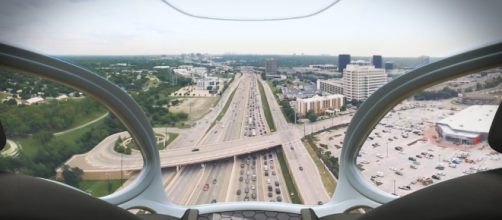The dream of flying cars has been around for decades, more a staple of science fiction than the real world despite a variety of commercial ventures trying to make the concept a reality. Now, Uber, the ride-sharing service that has disrupted personal transportation, proposes to make flying cars happen in two cities, Dallas and dubai, by 2020.
Uber’s approach will be to outsource the developing of what amounts to air taxis to outside entities. A number of companies are working on electric powered vertical takeoff and landing aircraft that runs on rechargeable batteries.
The FAA would be called upon to certify these new aircraft (something many experts don’t think can happen in three years.) The cities selected for the prototype system would be expected to develop a system of “vertiports” along with recharging stations and an air traffic control system to ensure these flying taxis don’t collide with one another. Uber has its tens of millions of customers and a smartphone app that would match passengers with pilots, though later versions of the air taxis would be autonomous. The flying taxis would have a range of 100 miles between recharging.
The way the system would work is that a passenger will arrive at a vertiport and use his or her app to connect with an air taxi to fly to a fixed destination, say from downtown to the airport.
Since the aircraft runs on electricity, the cost should not be much more than taking a regular Uber on the road. The difference is that instead of a grueling trip that might last for an hour or more in traffic, the passenger can be at his or her destination in minutes. Even if an air taxi runs at a premium, using it might be worth it for a business traveler whose time is precious.
Of course, some questions remain about the flying taxi scheme. How much growth potential does it have, considering that just as there is only so much road for ground hugging cars, there is only so much sky for the flying variety. No one wants the kind of high-speed bumper to bumper traffic in the sky as depicted in the second “Back to the Future:” film.
What happens when the inevitable accident happens, and one of the flying cars crashes to the ground? What sort of safety systems can be developed to mitigate that possibility? What kind of insurance and legal liability regime has to be in place to handle accidents when they do happen? These and other questions need answering before we get to that Jetsons’ future of aerial commuting.

